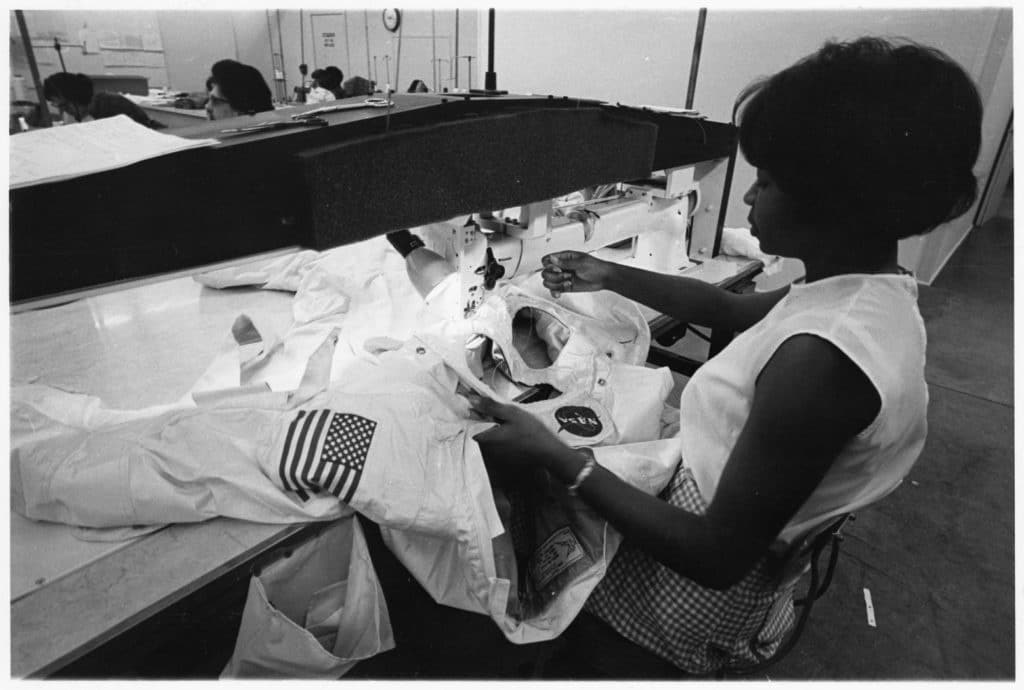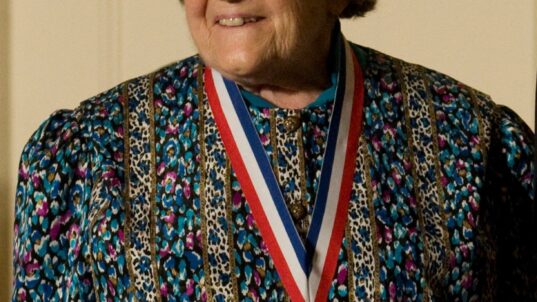
Hazel Fellows. NASA, Courtesy National Air and Space Museum Archives
As the United States ventured into space, NASA realized that the space suits worn by astronauts were critical to mission success. As early as 1947, the military had developed suits for pilots which were partially or fully pressurized. But these were considered unworkable for space travel.
The B.F. Goodrich Company, with their experience in designing suits for the Navy, was awarded the contract for the Mercury space program. Their design was based on their suits for Navy pilots with added layers of protection. They had to be custom made for each astronaut. Astronauts described the experience of wearing the suits as trying to work within a tire. Flexibility of movement was limited, especially when bending arms and legs.
For the Gemini program, the flight suits used by the Air Force became the model. Space suits became more flexible.
But when NASA began to think about space suits for the Apollo program and what was needed to function on the surface of the moon, they realized that space suits needed to meet new challenges. This was the first time that astronauts would be outside of the capsule and walking on the lunar surface. The space suit would essentially need to be like a wearable spacecraft.
Imagine that the suit would need to confront temperature extremes of -240°F to +240°F, withstand deadly solar radiation, and remain intact if hit by a micrometeorite. In addition, the suit had to be flexible enough to collect moon rocks, manipulate scientific instruments, and provide for ease of movement (even an unplanned jog).
NASA asked companies to bid on the development and manufacture of the space suit. The manufacturers of the space suits for the Mercury and Gemini programs submitted bids but did not win. The winning bid was a company little known to most Americans, ILC Dover.
What gave ILC Dover a competitive edge was their talented pool of seamstresses. Each suit needed to be made by hand for the body of each astronaut. A stitching error of 1/32 inch could endanger the life of an astronaut.
Another advantage of ILC Dover was their experience with rubber garments since they made Playtex bras and girdles.
Just imagine what the development of the moon walking space suits tells us about the diversity of talent needed for any innovation. You need creative talent to imagine the innovative direction to take. You also need the technical talent to translate the innovation into a workable reality. And you need the hands-on skill and know-how to actually implement the innovation.
When we speak of the need for diversity in working through challenges, we need to consider the diversity of talents needed. As was the case of the space suit, the best creative and technical minds would not have been successful without the talent and skills of gifted seamstresses. It takes all types of talent to produce success. How do we make sure we’re not overlooking the different kinds of talents in our midst?
* * *
“All of us are talented in our unique way. We just need to recognize our capacity and develop our talents to their full potential.” – Anonymous
This is part of our “Just Imagine” series of occasional posts, inviting you to join us in imagining positive possibilities for a citizen-centered democracy.



